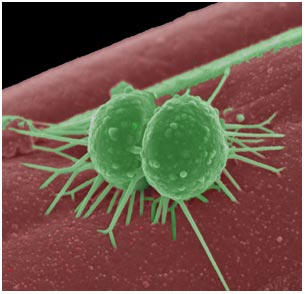Fuel cells go to waste
 (By Dallas Kachan) - Forget hydrogen, said a researcher today in Toronto powering fuel cells with wastewater and manure.
(By Dallas Kachan) - Forget hydrogen, said a researcher today in Toronto powering fuel cells with wastewater and manure. Microbial fuel cells, which create electricity using biology, are improving in efficiency and performance, a researcher told a cleantech investor audience today.
Dr. Khosrow Farahbakhsh, assistant professor of engineering at the University of Guelph, told attendees on the first day of the Cleantech Forum in Toronto that his team has reached a new level of performance with fuel cell technology powered by wastewater and other material.
“We’re successfully generating 50 watts per cubic meter, not very high,” he admitted. “This is an emerging technology.”
While comparatively low output compared to hydrogen or methane-based fuel cells, the University of Guelph team more than doubled the results achieved by researchers last year at Washington University in St. Louis, who only achieved about 20 watts, enough to power a small light bulb.
And by not requiring hydrogen or methane as fuel, the approach obviates the need for complex fuel delivery infrastructure.
The University of Guelph’s anaerobic (i.e. sealed) cells create electricity without catalysts or chemicals, but use microorganisms. The bacteria transfer electrons to yield low levels of power.
It’s a good thing the cells are sealed. Because these days, the researchers are experimenting with manure as a fuel.
“Manure is a great source of the bacteria itself, as well as the food for the bacteria and the substrate,” said Farahbakhsh, who noted one of his colleagues is now running a calculator on cow manure.
The technology is similar to a battery announced by Sony in August that runs on sugar.
And while sugar is indeed renewable, the basic science allows for feedstocks of virtually any type. The Guelph team picked wastewater so as to also pursue the remediation applications of the technology.
While fuel cells normally run at high temperatures, which creates cooling issues, the microbes powering this new biological approach can function at room temperature—although warmer temperatures of approximately 30 degrees Celsius are ideal, said Farahbakhsh.
Working with manure isn’t necessarily as, well, romantic as it sounds.
“The wife of one of our researchers is getting upset that she needs to drop him off in the farmers’ smelly fields every day. We can’t be responsible for the divorces of our researchers,” joked Farahbakhsh.
The scientist made his comments in a presentation at the research lab showcase at the Cleantech Network’s Cleantech Forum Toronto, which began today.
You can return to the main Market News page, or press the Back button on your browser.

